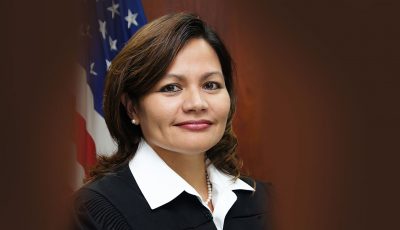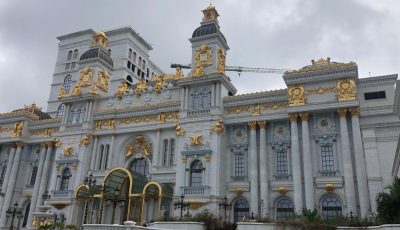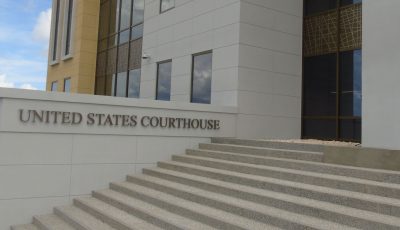BSI Garapan dig approved
Competing stakes at HPO meeting
Before the CNMI Historic Preservation Review board cast secret ballots to approve Best Sunshine International, Ltd.’s archaeological dig in Garapan, they pointed to the 261 human remains dug up by Swift Harper Archaeological Resource Consulting on the same grounds 15 years ago, recommending that the remains, which have been sitting in a rented air-conditioned room for over a decade, be reconciled with BSI’s future work.
However, SHARC said the remains could be had “with conditions,” and BSI argued that this data is outside what they were required to have per rules and regulations.
Discussion unearthed concerns over a potential lawsuit for the rights to these bones, the validity of the secret ballot casting, and open pitches across the room by SHARC principal investigator Michael Fleming to BSI that they fund the completion of his work.
Absolutely no dating has been done on this remains however, according to SHARC.
Board members wanted a “comprehensive understanding” and “complete picture” of past work articulated to make their decision. But BSI asked that this be required outside the application awaiting the board’s approval.
Five board members voted in favor of the project. One abstained.
Both BSI and SHARC had concerns over the secret ballot, citing transparency and the Open Government Act.
The board made the decision Monday to cast their votes in secret. They came out of executive session yesterday with the same decision, saying they would vote secretly until told otherwise.
The board doesn’t have a legal counsel, according to HPO.
Voting members present were Don Farrell, Pedro A. Duenas, Dr. Hiro Kurashina, Dr. Elizabeth Rechebai, Joseph Limes, and Fr. Francis X. Hezel. Kurashina excused himself, citing conflicts of interest as the BSI study is affiliated with the University of Guam, where he works.
In the end, the board voted in favor of the application, recommending that every effort is made to complete the both studies on the site and that any artifacts recovered be curated and showcased on site to show these artifacts to people who visit and live on the island of Saipan.
‘The pitch’
Fleming, who attended the meeting with SHARC partner Randy Harper, told the board that he has “no intention to keep a single piece” of the 260 remains.
He said he has been safekeeping the artifacts for the last 15 years, noting that what’s missing is a forensic analysis and report on these studies.
He said his investor wanted a hotel on the site, but backed out after Japan Airlines and other heavyweight investors pulled out of the CNMI.
The investor “abandoned us,” he said.
His completed work, which he claimed covered 95 percent of the hotel footprint, took three years because of the lack of funding.
“We’ve inherited 260 remains… We excavated every square inch,” and called the collections a “product” that could “fast-track” the BSI project.
In response to board member Hexel’s comment that available data “does not shine light” if there was a Spanish or ancient village structure on the site, Harper noted that they uncovered a 15-by-10 meter “burn deposit” that suggests a human burial grave.
Harper, alluding to Spanish accounts of the time, said that during the first contact with Chamorros, many villages were burned due to the resistance to military efforts.
He said the site could be a Spanish site “blended together” with a pre-historic one, which would provide a “connection between Spanish period and Chamorro period.”
He said the site could be “inherently a Chamorro village that came under attack” by the Spanish.
He said bones were “laid out like in a church yard,” suggesting of events prior to the forced relocation of Mariana Chamorros to Guam hundreds of years ago.
“It is in important site,” he said.
Rights
Board member Rechebai said it may take time, but the “best thing now is to have Best Sunshine and SHARC… sit together and come up with something that is reasonable” so the board will not be held hostage on what has been or not been found in making their decision.
BSI attorney Victoria Alepuyo informed the board that they followed regulations to submit reports based on information from HPO, which they have done, she said.
She said as late as Saturday they have had contact with SHARC, emphasizing that they do plan to meet but had other pressing matters to attend to.
Noting that SHARC’s investor had a commitment to build a hotel in Garapan, “inherent in that commitment is the obligation to conduct the study they undertook,” she said.
“They did that. If they did not finish the project out of non-payment, however, the CNMI has a right to whatever they found. If all they can do is dig up 260 remains and artifacts,” that should be turned over to HPO as well as a report indicating a report could not be done because of lack of funds, she said.
Holding up the process at this point “would be an injustice to my client,” she said,
Alepuyo said she contacted previous HPO archaeologist Eric Lash about SHARC’s proposal, who referred her to the Office of the Attorney General. According to her, the OAG counsel is “looking into HPO rights as well as the rights to the remains removed 15 years ago.”
She said the OAG requested that they wait for more information from their end before they met with SHARC.
She asked the board that if they do require them to meet with SHARC, this be understood that this is outside what is required of them.
‘There is nothing in the law or regulations that says this must happen,” she said, emphasizing that all the board has to do is approve or reject the project.
Farrell asked HPO why they did not address the question of rights 15 years ago, but Alepuyo advised that if they address the question with the board, they should have a counsel present. Farrell informed her they had none.
Alepuyo said she learned from HPO counsel that they’re “very sensitive,” alluding to legal matters.
State HPO officer Laura Ogumoro said this should not be an item of discussion. “We cannot discuss that,” she said.
“Is there a legal issue? Has a lawsuit been filed?” Farrel asked. Ogumoro said she could not comment further.
In an interview, Fleming said HPO could sure have the rights to the remains but “with conditions.” He had scholastic rights, he said, saying that if HPO wanted these remains, they have “missed the ball” and their statute of limitations has run out.
Harper also said that years ago they were told by HPO to wait for the arrival of a developer in the area. This developer has arrived now, he said. That’s why the idea of litigation, despite the keeping of these remains, baffles them.



























